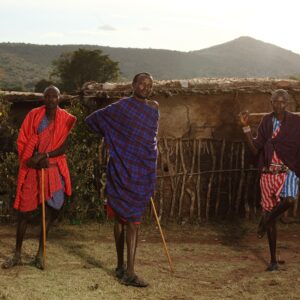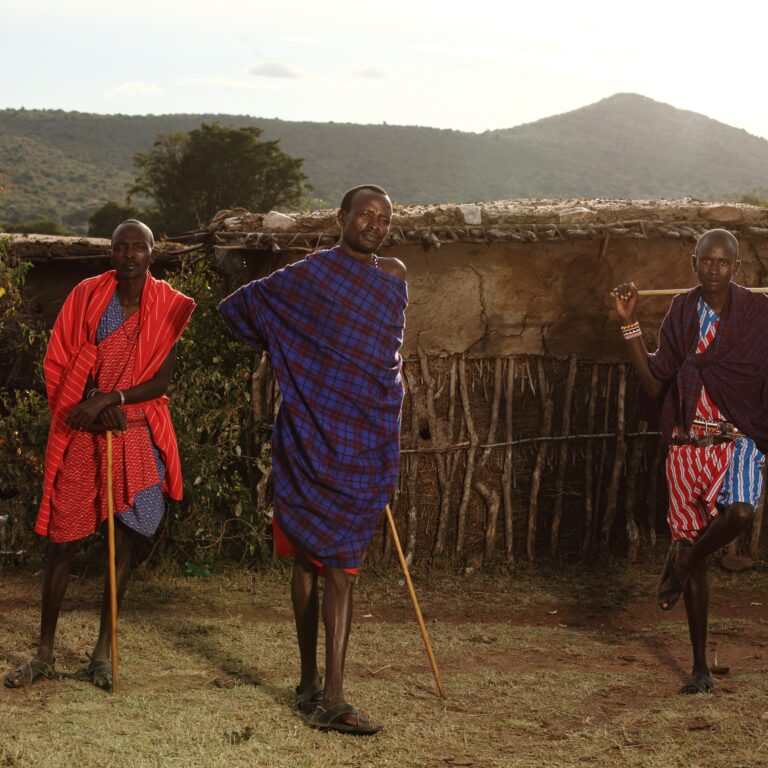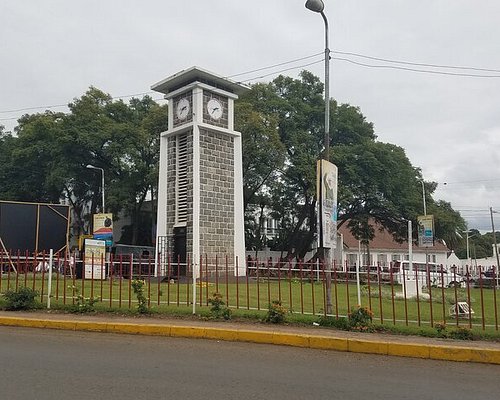Experience Tanzania captures the heart with its magnificent wildlife, towering peaks, and vibrant cultures. As your unforgettable adventure draws to a close, the desire to take a piece of this magic home with you becomes paramount. Beyond the photographs and cherished memories, a well-chosen souvenir serves as a tangible link to your journey, a story in itself that reflects the artistry, heritage, and natural beauty of East Africa. Tanzania offers a wide array of unique and authentic souvenirs. Some of the best gifts to bring home include traditional Maasai beads and jewelry, handwoven baskets, Kanga and Kitenge fabrics, local spices, carvings, and paintings. Tanzanite, a rare gemstone found only in Tanzania, is also a popular choice, as is coffee from the Kilimanjaro region.
But amidst the bustling markets and craft shops, how do you distinguish between mass-produced trinkets and truly authentic treasures? This guide will unveil the top 10 authentic gifts from Tanzania, offering insights into their cultural significance and helping you bring home genuine pieces of this incredible land.
1. Tanzanite: The Gemstone Born of Kilimanjaro
Without a doubt, the most unique and valuable souvenir from Tanzania is Tanzanite. This exquisite blue-violet gemstone is found nowhere else on Earth except in the foothills of Mount Kilimanjaro. Its rarity and stunning color spectrum, ranging from deep sapphire blues to vibrant lavenders, make it highly coveted. Nothing says Tanzania quite like Tanzanite, a highly sought-after gemstone that reflects the stunning colors of the African skies. Found only in Tanzania, this vibrant blue-violet stone adds a touch of elegance and serves as a cherished memento from your travels.
Authenticity. Ensure you buy from a reputable and certified jeweler to guarantee authenticity and ethical sourcing. Look for government-licensed dealers, particularly in Arusha or Dar es Salaam, who can provide certification. Significance. Tanzanite is relatively new to the world stage (discovered in 1967) but has quickly become a symbol of Tanzania’s unique geological heritage. Buying Tips. Be prepared for varying qualities and prices. Do your research on grading and pricing before you shop.
2. Maasai Crafts: Beaded Stories and Vibrant Textiles
The Maasai are one of Africa’s most iconic tribes, renowned for their distinctive culture and vibrant adornments. Their beaded jewelry (necklaces, bracelets, anklets, earrings) is not merely decorative; each color and pattern holds specific cultural meaning, often telling stories of status, age, or life events. From intricate necklaces to colorful shuka (cloaks), these handmade items tell stories of their rich culture and traditions. Purchasing Maasai crafts not only supports local artisans but also brings home a piece of lively Tanzanian heritage.
Authenticity. Buy directly from Maasai markets or community projects, where you know your purchase directly supports the artisans. Other Maasai Souvenirs. Look for the traditional shuka (a durable, colorful fabric often worn as a wrap) or carved wooden walking sticks. Significance. These items are deeply interwoven with Maasai identity and craftsmanship, representing their vibrant traditions.
3. Makonde Carvings: Intricate Narratives in Wood
From the Makonde people, an ethnic group primarily residing in southern Tanzania, come the mesmerizing Makonde carvings. These aren’t simple animal figures; they are intricate, often abstract, sculptures carved from dense ebony or other hardwoods. Each piece is unique, infused with deep meaning, making them a beautiful and thoughtful gift for art lovers.
Authenticity. True Makonde carvings are distinguished by their complex “tree of life” (Ujamaa) style, depicting interconnected human figures, or by highly stylized human and animal forms. The best pieces are often heavy and have a smooth, dark finish. Significance. These carvings are a profound expression of Makonde heritage, mythology, and social structures. Each piece tells a story, often reflecting themes of family, ancestry, and community. Buying Tips. Be aware of mass-produced imitations. Look for signs of hand-carving (subtle imperfections, tool marks) and ask about the carver and the story behind the piece.
4. Tinga Tinga Paintings: Bursting with African Life
The Tinga Tinga art style, originating in Tanzania in the 1960s, is instantly recognizable for its bright, often naive, and colorful depictions of African wildlife, village scenes, and mythological creatures. Edward Saidi Tingatinga founded this distinctive style. Named after the artist Edward Saidi Tingatinga, Tinga Tinga paintings are characterized by their bold colors and playful subjects, ranging from wildlife to everyday scenes. These vibrant artworks encapsulate the spirit of Tanzania and make for cheerful wall art that brings warmth to any space.
Authenticity. While widely replicated, authentic Tinga Tinga paintings are characterized by their vibrant enamel paints on canvas or board, strong outlines, and often a playful, whimsical quality. Significance. It’s a truly Tanzanian art form, celebrated for its unique visual language and its ability to capture the joy and energy of African life. Buying Tips. Look for established art cooperatives or galleries that support Tinga Tinga artists directly. Be prepared to roll the canvas for transport.
5. Tanzanian Coffee: A Taste of Kilimanjaro’s Slopes
Tanzania a significant producer of high-quality Arabica coffee, particularly from the rich volcanic soils of Mount Kilimanjaro and the Southern Highlands. A bag of local Tanzanian coffee beans a perfect aromatic reminder of your trip. Bring back a bag of these rich beans as a delicious reminder of your journey through Tanzania.
Authenticity. Look for “Kilimanjaro coffee” or single-origin beans from regions like Arusha, Mbeya, or Rungwe. Many coffee plantations offer tours and direct sales. Significance. Coffee is a vital cash crop for many Tanzanian communities, and buying directly supports local farmers. Buying Tips. Freshly roasted beans offer the best flavor. Many larger safari lodges also sell locally sourced coffee.
6. Zanzibar Spices: A Culinary Journey
If your itinerary includes Zanzibar, the “Spice Island,” then an array of aromatic local spices a must-buy. Zanzibar’s history is steeped in the spice trade, and its plantations yield some of the world’s finest cloves, vanilla, nutmeg, cinnamon, and black pepper. Zanzibar is often called the “Spice Island,” and for good reason. From cloves to nutmeg, bringing back an assortment of spices will not only let you recreate Tanzanian dishes at home but also provide a sensory experience reminiscent of your travels.
Authenticity. Buy from dedicated spice farms after a spice tour, or from reputable vendors in Stone Town. Significance. These spices are not just ingredients; they are a direct link to Zanzibar’s rich history, its position on ancient trade routes, and its vibrant culinary traditions. Buying Tips. Look for whole spices (e.g., vanilla pods, cinnamon sticks) as they retain their flavor longer. Spices often sold in small, beautifully packaged bags.
7. Khanga and Kitenge Fabrics: Wearable Art
Khanga and Kitenge vibrant, colorful printed cotton fabrics that ubiquitous across East Africa. Khangas typically feature a border and a Swahili proverb or message, while Kitenge designs are more varied and often used for clothing. These colorful, patterned textiles are a staple of Tanzanian culture. They can be used for clothing, wrapping, or as decorative pieces, offering versatility and vibrant designs.
Authenticity. These are everyday wear for Tanzanians and are widely available in local markets throughout the country. Significance. They are a powerful expression of East African culture, used for everything from fashion to baby slings, household decor, and social commentary. The proverbs on Khangas often carry deep meaning. Buying Tips. Markets offer the widest selection. You can buy them by the meter or as pre-sewn items. They lightweight and easy to pack.
8. Hand-Woven Baskets: Practical Elegance
Beautifully crafted hand-woven baskets are made by various ethnic groups across Tanzania using natural fibers like reeds, grasses, and palm leaves. They come in a multitude of shapes, sizes, and patterns. These functional and beautiful baskets are crafted by local artisans using traditional techniques. They come in various sizes and designs, making them a practical and attractive souvenir.
Authenticity. Look for baskets with natural imperfections that signal handcrafted quality. Significance. These baskets are often made using traditional techniques passed down through generations, reflecting the resourcefulness and artistry of local communities. They are practical, sustainable, and add an authentic African touch to any home. Buying Tips. Markets are the best place to find these. Check the weave for durability. Larger baskets might require extra luggage space.
9. Hand-Carved Wooden Items (General)
Beyond Makonde carvings, a wide array of general hand-carved wooden items can be found across Tanzania. These include decorative bowls, serving spoons, intricate animal figurines (especially the Big Five), tribal masks, and small decorative boxes. Wooden crafts Tanzania Souvenirs are omnipresent in Tanzanian markets. From beautifully carved figurines to functional kitchenware, these handcrafted items reflect the skilled artistry of local artisans and make for wonderful gifts.
Authenticity. Look for pieces made from local hardwoods. The quality of carving can vary greatly, from simple tourist items to genuine works of art. Significance. Wood carving is a widespread traditional craft, often representing local folklore, wildlife, and daily life. Buying Tips. Feel the weight and inspect the details. Bargaining is expected in markets. Consider how easily the item will travel.
10. Baobab Products: The Superfruit of Africa
The majestic baobab tree an iconic symbol of the African savanna, and its fruit is a nutritional powerhouse. Various baobab products make for unique and healthy souvenirs. Often referred to as the “Tree of Life,” the baobab fruit celebrated for its numerous health benefits. You can find baobab powder and other products that are both unique and beneficial, providing a taste of Tanzania’s natural bounty.
Authenticity. Look for baobab powder (a natural superfood rich in Vitamin C, fiber, and antioxidants), baobab oil (used in cosmetics), or even baobab seeds. Significance. The Tanzania Souvenirs baobab tree, revered in many African cultures as the “Tree of Life,” provides food, water, medicine, and shelter. Products from it embody this reverence. Buying Tips. Often found in health food stores, safari lodge gift shops, or local markets. Check for organic and sustainably sourced options.
- 8-Day | Ultimate East African Luxury Safari
- Amazing 10 Best Things to Do in Tarangire National Park
- 10 Reasons Why You Should Travel With a Local Safari Operator
- 10 Reasons Why You Should Visit Tarangire National Park
- Explore Our Luxury Tanzania Destinations
- 10 Interesting Facts About Serengeti National Park?
Conclusion: Bringing Tanzania’s Soul Home
Choosing souvenirs from Tanzania is more than just shopping; it’s an extension of your Tanzania Souvenirs travel experience. Each authentic gift, from the rare shimmer of Tanzanite to the vibrant patterns of a Khanga or the intricate lines of a Makonde carving, carries a piece of Tanzania’s soul. By selecting Tanzania Souvenirs items that reflect genuine craftsmanship, cultural heritage, and local communities, you not only bring home a beautiful memento but also contribute to the sustainable future of this extraordinary land. Happy shopping, and may your chosen treasures keep the spirit of Tanzania alive in your home!








